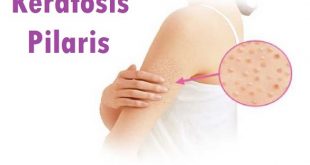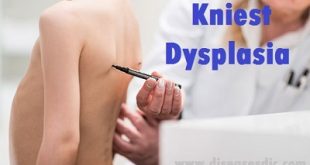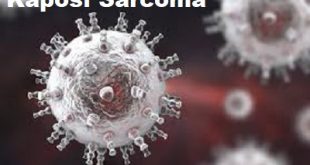Definition
Keloid scars are simply means your skin has suffered a wound. This is most often caused by an injury or through surgery. There are tissues in your body called fibrous tissue. These tissues are also known as scar tissues and they will form scars right over a wound. Sometimes an excess in scarring tissue develops and causes a hard growth which results is severe scarring. This growth is referred to as a keloid and can be a lot bigger than the original injury.
A keloid is a type of tumor but it is not malignant. They are considered chronic and most often will form right after surgery. There are other causes for these tumors including burns, piercing your ears, chickenpox and injuries to your skin. Unfortunately Asians, Latinos and African Americans can be genetically prone to the forming of keloid tissues.
Keloid scars
Pathophysiology of keloid scars
In normal wound healing, there is a balance between new tissue biosynthesis and tissue degradation. This is achieved through the processes of apoptosis and remodelling of the extracellular matrix (ECM).
During keloid formation, there is a prolonged inflammatory phase (due to immune cell infiltration into the scar tissue). This contributes to excess fibroblast activity and increased deposition of ECM, resulting in the tissue projecting beyond the original wound margin.
Risk factors
Keloid scars occur in about 10% of the population. It is unclear why some people develop keloid scars and others do not. However, several factors increase the risk of developing them. Risk factors for keloid scars include:
- African, Asian, Hispanic or Latino descent. The risk is 15 to 20% higher in these groups with darker skin tones.
- Age between 10 and 30 years
- Family history of keloid scars. About 1 in 3 people with keloids have a parent, sibling or child who also has them.
There may also be a link between sex hormones and keloid scars. Research suggests a higher incidence of keloid scarring during puberty and pregnancy. In women, keloid scars tend to shrink in size after menopause.
Causes of Keloid scars
After your skin is injured, your cells try to repair it by forming a scar. In some people, the scar tissue keeps forming long after the wound heals. This extra scar tissue causes the raised area on your skin that is called a keloid. Doctors still aren’t sure why some people’s skin scars this way.
Many different types of skin injuries can lead to a keloid. These include:
- Cuts
- Puncture wounds
- Surgical scars
- Severe acne
- Chicken pox
- Insect bites
- Injection sites
- Piercings
- Tattoos
Some people are more likely to develop a keloid when they scar. You are more likely to develop a keloid if:
- You are Black, Latino, or Asian
- You are younger than 30 years of age
- You are pregnant
- You are a teenager going through puberty
- You have a history of keloids in your family
People who have darker skin are 15% to 20% more likely to develop keloids.
Keloid scars symptoms
Keloid scars tend to develop and grow slowly. It can take a few months, or even longer than a year, for a keloid scar to appear. The proliferating scar may continue to grow and spread for weeks, months or years. However, it is possible for a keloid scar to grow and spread very quickly. They range in size from small dots to large growths of 12 inches or more. They most commonly appear on the ears, face, neck, shoulders, upper back, and chest. Scars on the upper trunk tend to be the largest.
Common keloid scar symptoms include:
- Pain, itching or tenderness. Large scars can also limit movement of the affected body part.
- Pink, red or purple color. The scar is usually darker than a person’s normal skin tone. It may continue to darken with time and sun exposure.
- Raised skin surface that feels different from surrounding skin. The raised area is usually fixed in place, meaning you can’t move it. Larger keloids can restrict movement.
- Soft, rubbery or hard texture
If you notice a scar developing abnormally, see your doctor. While it doesn’t pose a health risk, a keloid scar can adversely affect your self-esteem and quality of life. They will not go away on their own, but may respond to treatment. A referral to a dermatologist may be necessary to effectively manage the problem.
Complications
Complications are rare, but can arise.
Medical Complications can occur when Keloid is present in certain places like bends and joints, or while taking treatments like steroidal injections or external irritant applications or suffering from diabetes, neurological disorders, etc.
On getting a flare up, it might cause more pain and itching and can finally end in contractures and restriction of movement in the affected spots.
Possible Complications
- Cosmetic changes that affect the appearance. This is the most common complication people choose to take treatment for.
- Discomfort, pain or tenderness of the keloid.
- Irritation from rubbing on clothing or other forms of friction to the Keloids.
- Limited mobility: When the keloid is extensive after burns or injuries, keloids can limit the mobility of the body parts due to contractures of the skin and its tissues.
- Psychological distress: In cases, where the keloids are very large or disfiguring, they tend to affect the person emotionally.
Diagnosis and test
A dermatologist can usually diagnose a keloid by looking at it.
If a keloid looks like a worrisome skin growth, a dermatologist may perform a skin biopsy. This involves removing a small section so that it can studied under a microscope. A dermatologist can quickly and easily remove a small section during an office visit.
Treatment and medications
There is no single treatment for keloids, and most treatments do not give completely satisfying results. Two or more treatments may be combined. If you decide to pursue treatment for a keloid scar, you will have the best results if you start treatment soon after the keloid appears. Available treatments include:
Removal with conventional surgery- This unreliable technique requires great care, and keloids that return after being removed may be larger than the original. Keloids return in more than 45% of people when they are removed surgically. Keloids are less likely to return if surgical removal is combined with other treatments.
Dressings- Moist wound coverings made of silicone gel sheets have been shown in studies to sometimes reduce the size of keloids over time. This treatment is safe and painless.
Corticosteroid injections- Injections into keloids with triamcinolone acetonide or another corticosteroid medicine typically are repeated at intervals of four to six weeks. This treatment can often reduce keloid size and irritation, but injections are uncomfortable.
Compression- This involves using a bandage or tape to apply continuous pressure 24 hours a day for a period of six to 12 months. Such compression can cause a keloid to become smaller. For keloids that form at the site of an ear piercing, a clip known as a “Zimmer splint” usually reduces keloid size by at least 50% after one year of compression. Zimmer splints that resemble earrings are available.
Cryosurgery- This freezing treatment with liquid nitrogen is repeated every 20 to 30 days. It can cause a side effect of lightening the skin color, which limits this treatment’s usefulness.
Radiation therapy- This therapy is controversial because radiation increases the risk of cancer. Radiation treatments may reduce scar formation if they are used soon after a surgery, during the time a surgical wound is healing.
Laser therapy- This is an alternative to conventional surgery for keloid removal. There is no good evidence that keloids are less likely to return after laser therapy than after regular surgery.
Fluorouracil injections- Injections into the keloids with the combination of the chemotherapy drug fluorouracil and triamcinolone have been used when other measures have not been successful.
Dermabrasion- This is where a special tool is used to remove the top layers of skin through friction, not unlike a sanding machine. As the layers of skin are removed the discolouration caused by scarring can become reduced.
Microneedling- This treatment is sometimes known as collagen induction therapy. It works by using a special tool to create several, tiny injuries within a scar. These injuries usually heal within two days and new collagen is formed inside of the scar. Collagen is a protein that help gives our skin strength and elasticity. Through this process microneedling can reduce the discolouration associated with scarring by encouraging old skin cells to shed, including skin cells that have been discoloured by excess pigment. Multiple treatments tend to be required every four-six weeks to gain maximum benefits. It is important to note that reducing skin discolouration is not microneedling’s main purpose and targeted treatments designed for treating skin discolouration may work better.
Chemical Peels- This treatment works by removing the outer layers of skin using high concentrations of glycolic or salicylic acid. In doing so, it can reduce the discolouring that is associated with scarring. This treatment should only be carried out by a qualified practitioner
Prevention of Keloid scars
If you tend to get keloids, it’s best to avoid body piercings, tattoos, or any surgery you do not need. Keloids can grow after these procedures.
To prevent keloids after a minor skin injury, start treating it right away. This may help it heal faster and with less scarring. Using the following tips to treat the area may help prevent keloid growth.
- Compression to the area can help prevent the development of a new keloid after surgery. Patients will wear pressure earrings or garments for six to 12 months to prevent a keloid or potentially develop a smaller keloid.
- Anti-inflammatory steroid injections administered into a new scar can help reduce inflammation, which seems to play a role in keloid development.
- Silicone sheets, which resemble bandages without the gauze pad, can be applied to new wounds to reduce the risk of developing a keloid. However, these special sheets do not reduce the size of existing keloids.
 Diseases Treatments Dictionary This is complete solution to read all diseases treatments Which covers Prevention, Causes, Symptoms, Medical Terms, Drugs, Prescription, Natural Remedies with cures and Treatments. Most of the common diseases were listed in names, split with categories.
Diseases Treatments Dictionary This is complete solution to read all diseases treatments Which covers Prevention, Causes, Symptoms, Medical Terms, Drugs, Prescription, Natural Remedies with cures and Treatments. Most of the common diseases were listed in names, split with categories.







